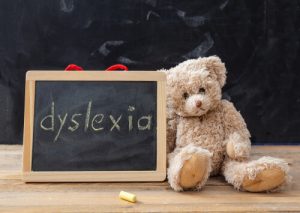Is dyslexia special needs? This question often arises in discussions about educational support and learning differences. Dyslexia, a common learning difficulty affecting the ability to read, write, and spell, poses unique challenges for individuals in academic settings and beyond. Understanding whether dyslexia falls under special needs is crucial for educators, parents, and policymakers.
This article delves into the intricate relationship between dyslexia and special education needs, exploring how it shapes educational strategies, support mechanisms, and the Department of Education’s overall approach to fostering an inclusive learning environment. By examining this question’s legal, educational, and social aspects, we aim to provide clarity and insight into the world of dyslexia as a special need.
What is Dyslexia?
Problems with precise and fluent word recognition and poor spelling and decoding skills characterize a particular type of learning disability called dyslexia. These challenges typically result from a deficit in the phonological component of language that is often unexpected about other cognitive abilities and effective classroom instruction.
Dyslexia is not merely a problem with visual reading; rather, it originates from complex neurological and linguistic processes. It varies in degrees of severity and often runs in families. Despite these challenges early on, individuals with dyslexia commonly possess average to above-average intelligence and can achieve academic success with appropriate strategies and support. Dyslexia is a lifelong condition, and its impact can vary at different stages of life.
Understanding Dyslexia Key Characteristics
Dyslexia, recognized under federal special education law, is a specific learning disability primarily affecting reading and related language-based processing skills. Its key characteristics offer insights into how individuals with this condition perceive and process written language.
Detailed Characteristics of Dyslexia:
- Challenges in Phonological Processing: Individuals with dyslexia often struggle with phonological processing, recognizing and manipulating sounds in spoken language, which is critical for learning to read.
- Reading Fluency and Accuracy Issues: Dyslexia is characterized by difficulties with accurate and fluent word recognition, often reflected in poor spelling, reading fluency, and reading comprehension.
- Decoding Words: People with dyslexia typically have trouble decoding words, meaning they find it challenging to connect letters to their corresponding sounds and blend them into words.
- Spelling and Writing Skills: Dyslexia can also impact writing skills, leading to challenges with spelling, organizing ideas, and composing written text.
- Inconsistent Standardized Test Scores: There might be a noticeable discrepancy between a student’s intelligence and their reading and writing skills, often evident in standardized test scores.
- Memory and Processing Speed: Dyslexia can affect working memory and processing speed, making it challenging to retain and process new information quickly.
- Eligibility for Special Education Services: Under the Individuals with Disabilities Education Act (IDEA), students with dyslexia may be eligible for special education services, including specially designed instruction and accommodations.
- Need for Early Identification and Intervention: Early identification and intervention are key to supporting students with dyslexia. This may include assessments by the school district and the development of an Individualized Education Program (IEP).
Is Dyslexia a Special Need?
Dyslexia is indeed classified as a special need under the umbrella of specific learning disabilities. In the context of education, particularly within the framework of the Individuals with Disabilities Education Act (IDEA), dyslexia qualifies for special education services. This classification recognizes the unique learning challenges faced by individuals with dyslexia and mandates the provision of specialized instructional strategies and accommodations in educational settings.
As a special need, severe dyslexia often requires tailored educational approaches to address its specific impact on reading, writing, and related language skills, ensuring that students with this condition receive the support necessary for their academic success.
The Legal Framework: Dyslexia as a Special Educational Need



Dyslexia, as a recognized special educational need, is encompassed within a specific legal framework that guides its identification, educational evaluation, and support in educational settings. This framework is critical in ensuring that individuals with dyslexia receive the necessary accommodations to succeed academically.
Key Elements of the Legal Framework for Dyslexia:
- Individuals with Disabilities Education Act (IDEA): Under IDEA, dyslexia is classified as a specific learning disability. This federal law mandates that public schools provide eligible children with disabilities, including those with dyslexia, free appropriate public education in the least restrictive environment.
- Special Education Services: Students diagnosed with dyslexia are often eligible for special education services. These services include tailored instructional strategies, accommodations, and modifications to the standard curriculum to meet their unique learning needs.
- Individualized Education Program (IEP): For students with dyslexia, an IEP is developed, outlining specific goals, accommodations, and services. The IEP team, including educators, parents, and specialists, collaborate to ensure the program addresses the student’s specific challenges with dyslexia.
- Section 504 of the Rehabilitation Act: This civil rights law prohibits discrimination against individuals with disabilities, including those with dyslexia, in federal funding programs. It provides for accommodations in the educational environment to level the playing field.
- Americans with Disabilities Act (ADA): ADA further protects individuals with dyslexia, ensuring they have equal access to education and other services, often requiring reasonable accommodations in schools and workplaces.
Tailored Educational Approaches for Students with Dyslexia
Addressing the unique learning needs of students with dyslexia requires tailored educational approaches. These specialized reading skills and strategies are designed to overcome the challenges dyslexic students face in reading, writing, and comprehension, ensuring they can achieve their full academic potential.
Effective Educational Strategies for Dyslexia:
- Multisensory Instruction: This approach involves engaging multiple senses (visual, auditory, kinesthetic) simultaneously to enhance learning and memory. Techniques like using colored overlays for reading or physical activities for spelling can be particularly effective.
- Structured Literacy Programs: Programs focusing on phonemic awareness, phonics, fluency, vocabulary, and comprehension are crucial. They should be sequential, systematic, and explicit to address the decoding difficulties characteristic of dyslexia.
- Use of Assistive Technology: Tools like text-to-speech software, audiobooks, and speech recognition can significantly aid reading and writing tasks, allowing students to work more independently and effectively.
- Orton-Gillingham Approach: This structured, sequential, and multisensory technique is widely recognized for its effectiveness in teaching dyslexic students.
- Professional Development for Educators: Training teachers to recognize dyslexia and understand how to implement these tailored approaches is key. Awareness and continued education for educators can make a significant difference in the learning experience of dyslexic students.
- Regular Progress Monitoring: Continuously assessing the student’s progress and adjusting teaching methods accordingly ensures that the instructional strategies remain effective and responsive to the student’s evolving needs.
The Role of Parents and Teachers in Supporting Dyslexic Learners
The support of parents and teachers is fundamental in the educational journey of dyslexic learners. Their collaborative efforts play a crucial role in creating an enabling graduate school environment that fosters learning and personal growth for students with dyslexia.
Key Roles of Parents and Teachers in Supporting Dyslexic Students:
- Early Identification and Advocacy: Parents and teachers are often the first to notice signs of dyslexia in a child. Prompt identification and advocacy for appropriate assessments and resources are vital in setting the stage for effective support.
- Creating a Supportive Learning Environment: Teachers should implement classroom strategies tailored to dyslexic learners, such as providing clear, concise instructions and using multisensory teaching methods. Parents can create a supportive home environment by encouraging reading and providing tools that assist in learning.
- Fostering Open Communication: Regular and open communication between parents and teachers is essential to monitor the child’s progress, share insights, and adjust strategies as needed.
- Encouraging Strengths and Interests: Recognizing and nurturing the strengths and interests of dyslexic learners can boost their self-esteem and motivation. Both parents and teachers play a role in identifying these areas and providing opportunities for success and growth.
- Providing Emotional and Social Support: Understanding the emotional challenges faced by dyslexic learners, parents, and teachers should offer empathy, patience, and encouragement, helping students develop resilience and a positive self-image.
- Educational Planning and Collaboration: Collaborating on educational planning, including IEPs or 504 plans, ensures that the specific needs of the dyslexic student are met both at school and at home.
- Utilizing Resources and Training: Both parents and teachers can benefit from training and resources that enhance their understanding of dyslexia. This knowledge enables them to support the learner’s unique educational needs better.
Beyond the Classroom: Long-Term Support and Resources for Dyslexia



Support for individuals with dyslexia extends beyond the classroom, encompassing a range of long-term resources, special education programs, and support systems. These are essential for managing dyslexia effectively throughout different stages of life, from childhood to adulthood.
Comprehensive Long-Term Support and Resources:
- Continued Educational Support: Beyond school, continued educational support can include tutoring, access to special education services in higher education, and accommodations in standardized testing and professional certification exams.
- Workplace Accommodations: In the workplace, adults with dyslexia can benefit from accommodations such as extra time for tasks, access to assistive technology, and alternative methods of communication, ensuring equal opportunities and a supportive work environment.
- Assistive Technology Tools: Long-term support often involves using assistive technology, such as text-to-speech software, audiobooks, and organizational tools, which can be crucial in managing daily tasks and professional responsibilities.
- Support Groups and Networks: Joining support groups or networks for individuals with dyslexia provides opportunities for sharing experiences, strategies, and emotional support, fostering community and belonging.
- Access to Specialists and Therapists: Regular consultations with educational psychologists, reading specialists, and therapists can provide ongoing guidance, personalized strategies, and emotional support.
- Lifelong Learning and Skills Development: Emphasizing the importance of lifelong learning, continuous skills development programs and courses can help individuals with dyslexia keep abreast of new strategies and technologies.
- Advocacy and Public Awareness: Advocacy groups and public awareness campaigns play a significant role in promoting understanding of dyslexia, influencing policies, and ensuring the availability of resources and support.
In conclusion, dyslexia is a special need that affects individuals’ ability to read, write, and process information. Educators and parents need to be aware of the challenges and reading difficulties dyslexic students face and to provide them with appropriate support and accommodations. By understanding the unique learning needs of individuals with dyslexia, we can create an inclusive educational environment that allows them to thrive and reach their full potential.
References
Does Special Education law include dyslexia?
https://improvingliteracy.org/ask-an-expert/does-special-education-law-include-dyslexia
Dyslexia and Related Disorders | Texas Education Agency
https://tea.texas.gov/academics/special-student-populations/dyslexia-and-related-disorders
Dyslexia – NHS
https://www.nhs.uk/conditions/dyslexia/
Dyslexia Basics – International Dyslexia Association
https://dyslexiaida.org/dyslexia-basics/
Children with special educational needs and disabilities (SEND)
https://www.gov.uk/children-with-special-educational-needs

